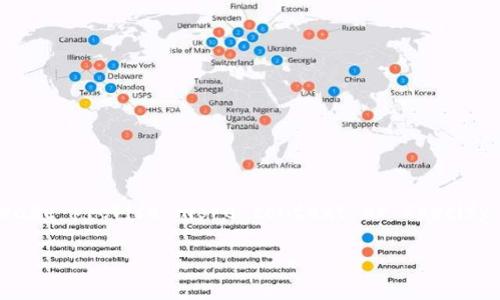Alright, let's dive right into it! Tokenomics is a blend of "token" and "economics." It refers to the study and design of the economics behind cryptocurrencies and blockchain projects. So, you want to understand how these digital coins and tokens function? You're in the right place! Tokenomics encompasses everything from the supply of a token to its utility within a given ecosystem, inflation rates, and governance structures. It's fascinating stuff!

Let’s be real here; without a solid grasp of tokenomics, you could be making investments that aren’t well thought out. Knowing the fundamentals can help you make informed decisions about where to put your hard-earned money. You might ask, "Why should I care?" Well, understanding tokenomics can help you gauge the potential of a project—its value and sustainability in a market that’s always shifting.
So, what are the essential components of tokenomics that you should keep in mind? Let’s break it down!
Just like any traditional economy, supply and demand significantly affect token prices. If a token has a limited supply, and the demand increases, its value is likely to go up. Think about Bitcoin—there will only ever be 21 million BTC. That scarcity drives a lot of its value.
A token’s utility is vital. Will it let you access a service, vote on governance issues, or be used for transactions? The more utility it has, the more valuable it can become. Say you’re using a token to pay for transaction fees, access to special features, or even get rewards—these are all factors that can increase a token's desirability.
Most projects need an incentive for users to engage. Whether it’s earning yield on your tokens through staking or receiving governance tokens for participating in the ecosystem—these incentives can attract more users, driving demand. You’ll want to pay attention to how projects structure these incentives.

Now that we’ve covered some foundational concepts, let’s touch on specific metrics you should keep an eye on:
This metric indicates the total value of a project. It’s calculated by multiplying the token's price by its circulating supply. This can give you a quick snapshot of the project’s overall valuation in the market.
Circulating supply refers to the tokens currently available to the public. Total supply, on the other hand, includes all tokens that will ever exist. Understanding the difference can help you gauge potential price changes based on inflation or saturation.
How are the tokens distributed? Are they held by a small number of wallets (sometimes known as "whales")? A concentration of tokens can lead to price manipulation. It's essential to check this distribution to understand if everyday investors have a fair chance.
Let’s take a moment to look at some real-world projects that have nailed their tokenomics. These examples will give you a clearer picture of what you should be aiming to see:
Ethereum is not just a cryptocurrency; it’s a platform. Its token has a strong utility for powering smart contracts and decentralized applications. Plus, Ethereum 2.0 is introducing a Proof-of-Stake model that will help in reducing the total supply over time, making it even more interesting to investors.
Chainlink has revolutionized how data is brought onto the blockchain through oracles. The LINK token has tangible utility, allowing users to pay for data feeds and smart contracts. Tokenomics is well-designed to fuel growth and adoption within its ecosystem.
Cardano is another great case. Its staking rewards encourage users to hold their tokens, which locks them up and potentially reduces circulation. Moreover, the governance model allows holders to have a say in future developments, making them feel more invested.
While we’re on the topic, let’s chat about some red flags to watch for in tokenomics. Avoiding these pitfalls can save you a lot of heartache down the road:
If a token is just hype without a clear utility, that's a warning sign! Don’t get sidetracked by a flashy marketing campaign. You're looking for actual use cases—believe me, they matter!
A project with a high inflation rate might dilute your holdings over time. Always keep tabs on how much new supply is entering the market. Too much of it can really weigh down a token's value.
If you find that a few individuals have control over network decisions, it can hamper decentralization. Look for projects that genuinely operate in a decentralized manner, giving power back to the users.
Okay, so you know all this stuff, but how do you put it into practice? Researching tokenomics doesn’t have to be a chore!
Don’t skip reading the whitepaper! It offers a treasure trove of information about the project, including tokenomics. Look for clarity and detail here—if the tokenomics section leaves you puzzled, it might not be worth pursuing.
Forums, social media groups, and community discussions can offer invaluable insights. Seeing what current holders think about a token’s utility and distribution can help you gauge whether it’s worth your investment.
There are numerous platforms out there to analyze token performance, such as CoinMarketCap and DeFi Pulse. These tools provide metrics like market capitalization, trading volume, and more—definitely worth checking out!
So there you have it, folks! Tokenomics is an essential aspect of the cryptocurrency world that can guide your investment choices and deepen your understanding of various projects. By focusing on the supply dynamics, utility, and key metrics, you will be well-equipped to navigate this exciting field. Don't shy away from doing your own research and staying updated—this space evolves fast!
In your journey through the world of digital currencies, remember to be mindful. A solid understanding will make all the difference. Whether you’re a seasoned veteran or just dipping your toes, tokenomics will be a key player in your cryptocurrency endeavors. Happy investing, and always stay curious!